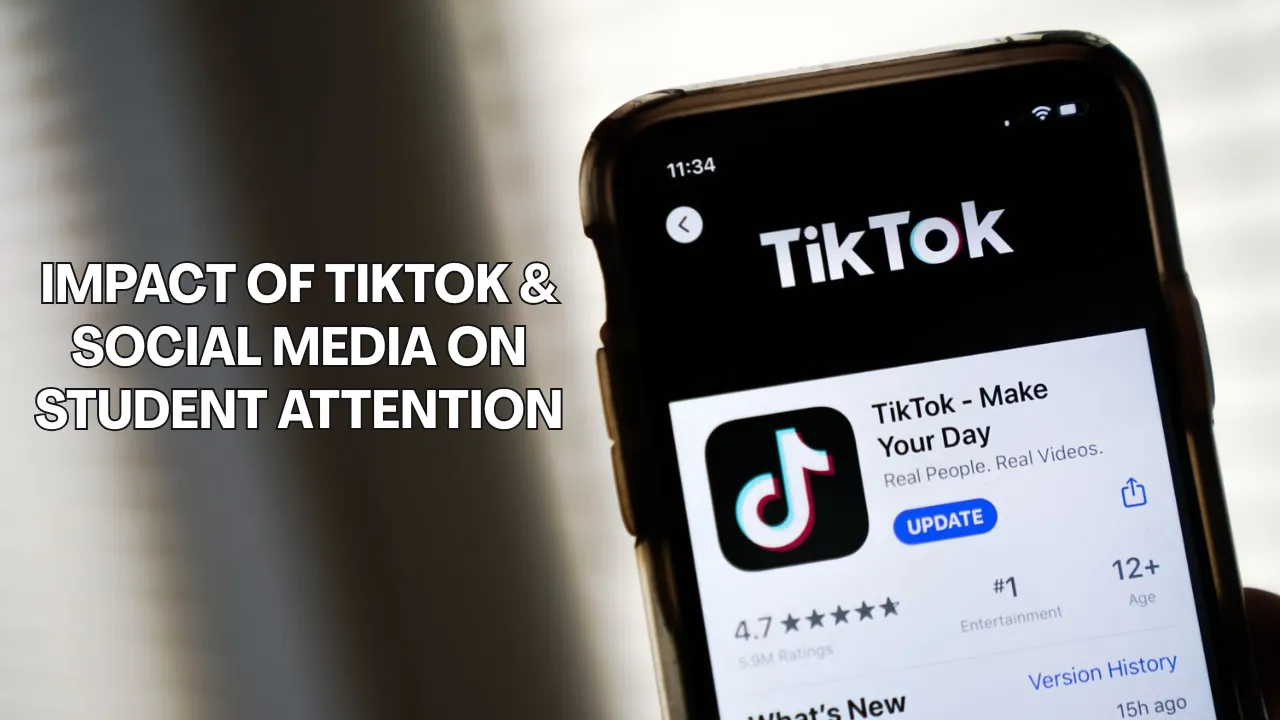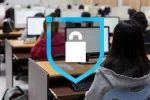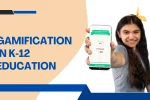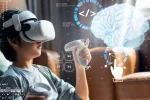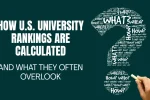Impact of TikTok & Social Media on Student Attention: The way students consume information has drastically changed over the past decade. What once took place in libraries or classrooms now often unfolds on mobile screens in the form of rapid-fire, 60-second videos. Platforms like TikTok, Instagram, and YouTube Shorts have redefined how young people engage with the world—and how their brains handle that engagement. While these tools offer creative freedom and accessibility, they also introduce new challenges to maintaining focus and sustaining deep learning.
As educators and parents observe growing signs of digital distraction, it’s become essential to explore the real impact of TikTok & social media on student attention. What are students gaining? What are they losing? And how do we help them strike a healthier balance in a tech-heavy world?
Impact of TikTok & Social Media on Student Attention
The impact of TikTok & social media on student attention is no longer speculative—it’s visible in classrooms, homework patterns, and test performance. These platforms are built on instant gratification, short video bursts, and algorithms designed to hold users for as long as possible. For students, this environment trains the brain to seek quick rewards and constantly switch tasks. As a result, attention spans shorten, deep focus weakens, and multitasking becomes habitual—even when it undermines learning. However, when used wisely, social media also presents opportunities for student engagement, creative thinking, and micro-learning. The key lies in conscious use, guided by awareness and self-control.
Overview Table: Key Impacts and Observations
| Category | Effects |
| Attention Span | Shortened focus, difficulty concentrating on long-form content |
| Multitasking | Increased task-switching, reduced productivity and memory retention |
| Academic Performance | Lower retention, distracted study routines, interrupted deep work |
| Sleep Patterns | Late-night scrolling, disrupted sleep, daytime fatigue |
| Emotional Health | Dopamine overuse, dependency on likes and views, increased anxiety |
| Learning Tools | Potential for short-form educational content and visual learning |
| Creative Expression | Students share ideas through video, boosting confidence and recall |
| Social Connection | Strengthened peer networks, yet increased exposure to distractions |
How Attention Works in the Social Media Era
Attention is a finite resource. When students constantly engage with fast-paced content, their brains adapt to expect rapid stimulation. This shift can make slower, more focused activities—like reading a novel or solving math problems—feel boring or even stressful. This phenomenon is known as “attention fragmentation.” The brain jumps from one idea to another, struggling to stay anchored in a single task for extended periods.
Moreover, frequent use of platforms like TikTok rewires neural pathways, reinforcing habits of scanning, skipping, and craving novelty. This leaves little room for reflective thinking, comprehension, or focused study. For students trying to learn, it creates a mismatch between how their brains are being trained and what academic success actually requires.
Cognitive and Academic Challenges from Social Media
1. Shorter Attention Spans
Students exposed to high-volume short videos may find it harder to stay engaged during longer lessons or written assignments.
2. Disrupted Study Habits
Many students use social media during homework, believing they can multitask. In reality, frequent task-switching reduces focus, increases error rates, and lengthens study time.
3. Poorer Memory Retention
Repetitive content-switching leads to shallow cognitive processing, weakening long-term memory and comprehension.
4. Increased Stress and Fatigue
Constant notifications, likes, and performance pressure create low-level anxiety. Add late-night scrolling, and sleep quality suffers—further impacting attention and academic stamina.
Positive Uses of TikTok and Social Media for Learning
While risks exist, not all outcomes are negative. When used intentionally, social media can enhance learning in specific ways:
- Micro-Learning: Short, topic-specific videos can introduce or reinforce concepts in a quick, accessible format.
- Peer Learning: Students share tips, revision hacks, and motivation, fostering collaborative education.
- Visual Learning Tools: Diagrams, storytelling, and demonstrations on TikTok or Instagram Reels can support different learning styles.
- Creative Expression: Creating content—like summarizing a novel in 60 seconds—can strengthen understanding and encourage active engagement with material.
Strategies to Improve Attention and Reduce Distraction
To counter the negative impact of social media, students can apply several effective strategies:
1. Digital Boundaries
Use “Focus Mode” or app blockers during study time. Turn off non-essential notifications and set app usage limits.
2. Structured Study Sessions
Adopt the Pomodoro technique—25 minutes of focused work followed by a 5-minute break. This supports sustained attention while allowing time for rest.
3. Scheduled Social Media Use
Instead of checking apps randomly, designate set times during the day to scroll or create content.
4. Active Tech Use
Rather than passively consuming, use social media to produce—make educational content, follow study-focused creators, or participate in online academic communities.
5. Digital Detox Days
Take one day a week off social media to reset focus and reduce digital fatigue.
Role of Parents and Educators
The challenge of managing digital distraction shouldn’t fall on students alone. Parents and teachers play a crucial role:
- Parents can model healthy tech habits, create no-device zones, and encourage offline hobbies or activities.
- Educators should integrate digital literacy into curricula, teaching students how algorithms shape attention and behavior.
- Schools can promote mindful tech use through workshops, open discussions, and policies that guide rather than ban digital tools.
With a cooperative approach, digital tools can evolve from distractions into deliberate extensions of student learning.
FAQs
1. Does TikTok directly reduce students’ attention span?
Frequent exposure to fast-paced content can reduce the brain’s ability to focus on slow, sustained tasks. It doesn’t damage attention, but it retrains how attention is allocated.
2. Can students use TikTok for learning?
Yes. When used for educational content, TikTok can support memory, comprehension, and engagement—especially with visual or creative learners.
3. How can students reduce screen time without quitting social media?
They can use screen time limits, mute notifications, take breaks, and replace passive scrolling with purposeful content creation or consumption.
4. Are all social media platforms equally distracting?
Not necessarily. Platforms that rely heavily on short videos and constant updates—like TikTok and Instagram—tend to be more distracting than structured platforms like LinkedIn or Reddit used for learning.
5. What role should schools play in managing social media’s impact?
Schools should educate students about digital responsibility, balance screen use in classrooms, and provide tech-free spaces or times for deep learning.
Final Thought and Call to Action
The impact of TikTok & social media on student attention is profound, but not irreversible. Today’s students are growing up in a world of constant digital noise—yet they also have the potential to master that world with the right tools, awareness, and habits. Social media isn’t the enemy; it’s a powerful tool that needs mindful handling.
Start by observing your own digital habits. How often do you scroll without purpose? How quickly do you switch tasks? Challenge yourself to reclaim your attention. Educators, parents, and students must work together to build healthier digital environments where focus and learning can thrive.
If you found this guide helpful, share it with others who care about student wellbeing and education. Let’s make attention a priority again, one mindful choice at a time.

